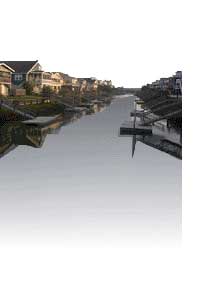Negril’s
history only began a few centuries ago. Known as a shipping haven in the 1700’s, Negril’s sparse population and
lack of visitors was due to a large swamp area and extremely bad roads, that made getting there difficult. One of the first
people to realize Negril’s potential was Norman Washington Manley who ordered canals to be cut in order for the swamp
to be drained. He then had a major highway built. It’s no wonder why the main road in Negril is named after him.
In
1958 Negril’s Land Authority was established. There to supervise the land development, and preserve the unspoiled beauty
Negril had to offer, they have been ineffective and only step in occasionally. Even when it comes to the rule “no building
shall be built taller than the tallest palm tree.” Only to have palm tree’s that tower brought in so the buildings
can go that much higher.
During
the 60’s Negril saw an influx of “hippies”. These college students, draft dodgers, veterans and foreigners
all saw Negril as a safe haven, especially Negril’s West End. They gravitated there to people’s homes, for a place
to get away from all the rules of typical society. As a result of the increasing numbers of visitors’ landowners in
the West End prospered, and shortly after more homes and business received more modern conveniences.
It
was not that long ago that Negril finally got TV’s and telephones, many places also got electricity, and pipe water.
Only a few hotels lined the beach and cliff area. So Negril has come a long way in a short amount of time. Negril is now lined
with mega hotels beginning in Bloody Bay, large and small hotels, and cottages, line the beach of Long Bay, and the West End
cliffs. Vendors and small shops can be found all throughout the beach area and plaza’s can be found at the round about,
towards the West End Road.
Negril
is now flocked with travelers from all over the world. Spring breakers invade Negril’s beach every year from March until
the beginning of April. Tourists from colder climates travel to Negril during the winter months, from December to April, to
get away from the cold and enjoy Negril’s warmth. From mid-April to the beginning of December many bargains can be found
as its Negril’s off-season.
When
it comes to environmental issues Negril leads the pack. Marine parks to protect the reef have been put into place. Over the
past few years the reef has become lack luster due to storms and boating. Energy and water conservation and coastal clean
ups are among a few of the issues Negril has begun to tackle. Many of the hotels are proud to be a part of the conservation
efforts put forth.
With
it’s gleaming white powdery sand beaches and water so clear you can see the bottom even in great depths it’s easy
to understand why people flock to Negril and why it’s said to have the best beach in the Caribbean. Calm waters beckon
young and old to drift in the clear Caribbean Sea. To watch as the small silver herring jump in schools out of the water to
evade larger prey, or as a ray gently glides along the shore.
Come to Negril to meet the smiling faces, see new sights, relax, and let your soul get re-energized. You may
fall in love with this country, and Negril itself, like so many before you already have.
